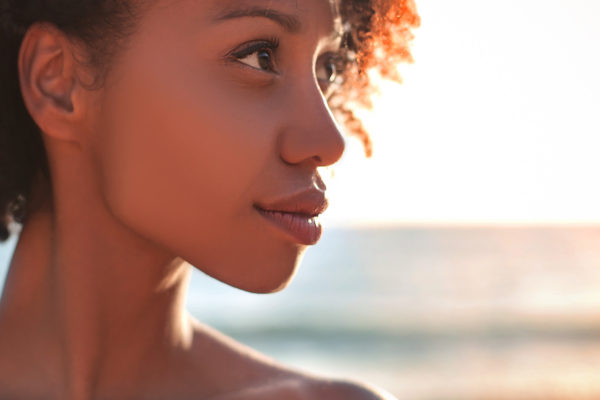Latest Research
Playing the Long Game; Cancer, Children and a Future Family
When a child, teenager, or young adult is diagnosed with melanoma or other cancers, the immediate response is to jump into treatment as soon as possible to blast it out of the body. But before diving into surgeries, chemotherapy, or other drug therapies, it’s equally important to take a breath, step back, and consider the long game; the quality of that young person’s life once the cancer is gone. Infertility is a special concern for anyone facing cancer, but it’s crucial for young people with bodies still growing, developing, and maturing. Your child’s risk of infertility will depend on the type of cancer they have and the recommended treatment. Tackle the issue early through conversations with your oncologist and pediatrician. Don’t expect them to come to you. You need to take the initiative! Teenagers should be directly involved in the conversation themselves, but be ready to step in if they…
Healing Through the Power of Gratitude
You’ve heard the adages; “Laugh through the tears.” “Smile, you’ll feel better.”When your world is overwhelming and it seems you can’t catch a break, the simple act of smiling and expressing gratitude can go a long way to mental and physical healing. It’s neuroscience! Gratitude triggers the release of “feel good” chemicals in the brain sometimes called a “Gratitude Cocktail”. Dopamine, Serotonin and Oxytocin all are released into your system when you learn how to infuse gratitude into your life. A surge of those neurotransmitters can strengthen your immune system, decrease depression, anxiety, and chronic pain as well as improve your personal relationships. The benefits come when you make the choice to be grateful and practice a few steps to create new response pathways in your brain. Begin with self compassion. Acknowledge and name your loss, frustrations and challenges. Own it. Then look at your life as a whole. Reflect…
Anxiety Ruining Your Vibe? Try This!
It is the word that seems to be on everyone’s lips these days; anxiety. And lets be honest; is that really so surprising? Even in the day-to-day routine of life, it seems the world is bombarding us from every direction. Stress causes your heart to race, your breathing clinch and your brain fog up until its impossible to think clearly. Anxiety is especially challenging for young people who have yet to develop the coping skills that come with maturity. Imagine then, the additional stress of a diagnosis of melanoma or cancer. It’s like lighting a fuse. That’s why it is more important than ever to learn how to manage your emotional wellness to enhance your physical health and strengthen your body against disease – no matter your age or status in life. Let’s begin by understanding what happens when anxiety strikes. During a normal stressful situation, your body releases hormones…
The Risks of Spray & Aerosol Sunscreens
Let’s face it; as essential as sunscreen is to our daily life, putting it on is an absolute pain in the #%&!! Why not make it as easy as possible? That’s where spray or aerosol sunscreens come into play. A quick spray here; another hit there! It’s fast. It’s easy. It doesn’t get on your hands – what could be wrong with that? Quite a bit to be honest! First off, coverage of a spray is a fraction of a liquid sunscreen. Spray sunscreen is diluted by high levels of propellant in the canister. In short, on average, only half the bottle actually contains sunscreen! And because sprays tend to sit on the surface of the skin – if it doesn’t blow off in the wind – the sunscreen isn’t absorbed into the epidermis; key to total protection. To actually get full SPF protection, you would need to saturate your…
Don’t Get Blindsided! Your Thyroid and Melanoma
It was the perfect storm. When Claire was diagnosed with cutaneous melanoma at the age of 14, it absolutely blindsided us. She wore sunscreen, never tanned and got annual skin screenings. What was missed was the risk associated with hypothyroidism; a condition that can occur as a result of puberty. Claire became fully symptomatic at the age of 14; a diagnosis coinciding with drastic and quick changes in a mole that had always been prettily sitting on her ankle.
More Evidence of Why Melanoma Is of Special Risk to Young People
You’ve heard us share the statistics again and again; melanoma is one of the most common cancers in adolescents and young adults – or AYA’s as they are called. Now new research reinforces why early detection is more critical than ever. For any human, the key to beating melanoma is detection at the very earliest stage before it has spread. But researchers at the Keck School of Medicine at the University of Southern California determined it is especially crucial when it comes to AYA patients. When found early, adolescents and young adults have a much better chance of surviving melanoma than older adults. But when melanoma has advanced to stage IV, when it is metastatic and has spread through the body, young people have only a 20% chance of surviving melanoma; a much worse rate…
Heads Up! Before You Pop a Cool One – Alcohol and Risk of Melanoma
Be careful of what you pull from that icy cooler to quench your summer thirst! New research indicates that drinking alcohol can actually make your skin burn in the sun more quickly and more severely! And it's not just because imbibing may distract you from reapplying sunscreen as often as needed! The alcohol changes your skin on the cellular level, lowering levels of carotenoids and deregulating your immune system.
Why is Melanoma Striking So Many Young Men?
Melanoma? It’s a girl thing. Old guys get it. It only affects fair-skinned people. Right? Wrong. Dead wrong. You’ve heard us say it before; If you have skin - you are at risk for melanoma - especially adolescents and young adults who have unique hormonal and lifestyle factors which come into play. The hard truth is this; if not found early - melanoma can kill you. This Melanoma May, we turn the spotlight on the guys!
Game-changing stat: Outdoor athletes are at a higher risk for Melanoma
Sun exposure among young athletes is such a big deal that the super geniuses over at Stanford University created THE most comprehensive sun protection outreach and research program of any university in the nation: SUNSPORT. Know the risks and find smart, skin- and life-saving tips below.
This is not a drill: Research shows higher skin cancer risk among U.S. military members
If you know someone who’s serving in the military, be sure to let them or their family know they should be taking extra steps to protect their skin from melanoma. Pilots are particularly susceptible to skin cancer, as are those who serve in desert climates.
Your Child’s Check: 10 Years Old
Did you know? That the Skin Cancer Foundation recommends that physician examination in these families should start at the age of 10 and continue on a twice-a-year basis thereafter. Particular care should be taken at puberty and during adolescence when hormonal changes activate the moles.
Newsflash: The sun isn’t always to blame
When it comes to adolescent and young adult melanoma, leading experts say genetics and hormonal changes during puberty are often a factor. We are highlighting this study, because like Claire, all the patients who died from melanoma were older than 10 years at time of diagnosis. It seems that postpuberal age might have been a factor determining death risk.
Hypothyroidism, puberty & melanoma
Hypo what? In a nutshell, hypothyroidism means the thyroid gland can’t make enough thyroid hormone to keep the body running normally. It can develop during puberty and has been linked to melanoma. Such was the case with Claire. This study, from MD Anderson, found that hypothyroidism can feed the development of melanoma cells.
Pregnancy & Melanoma
More and more mommas-to-be are getting melanoma. According to new Cleveland Clinic research, women younger than 50 who are pregnant or have recently been pregnant are most at risk. So, what’s the deal? Researchers at the Cleveland Clinic found hormonal changes in pregnancy can be the culprit.
Melanoma Can Develop Where the Sun Don’t Shine
Acral lentigimous melanoma (the type of melanoma that took Bob Marley’s life) can develop on the feet, under toenails and fingernails.
Melanoma and Ethnicity: Melanoma Doesn’t Discriminate
It’s a common misconception that people with darker skin are immune to skin cancer. The truth is, while skin cancer and melanoma is more common among lighter-skinned people, it tends to be deadlier among people of color.
UPF Plus SPF Saves Lives
Research shows you need sun protective clothing in addition to sunscreen to protect your skin from the sun. Consider it an excuse to go shopping.
Women, Estrogen and Melanoma
Yet another study indicates melanoma is not always about the sun. Scientists are now investigating why women under 50 are proving to be at greater risk for melanoma.
Melanoma can appear where you least expect it!
Research by Japanese scientists has found stress and damage caused by normal walking or running could be a risk factor for developing melanoma on the soles of the feet.
When it comes to melanoma, thinner is better!
Screening for skin cancer is essential in saving lives. The risk of dying of the disease is directly related to the thickness or depth of the melanoma. The longer a malignancy goes unnoticed, the thicker the melanoma grows and greater the risk of dying.
Never let a doctor tell you that your child it too young to get melanoma.
A 2013 study published in the journal Pediatrics reports the number of diagnosis of melanoma in young people is on the rise by 2% each year in the U.S. It is estimated by The National Cancer Institute that some 500 children in the U.S. will be diagnosed with melanoma each year. Melanoma is also the second most common form of cancer for adolescents and young adults between 15 and 29 years old. A recent study from Johns Hopkins found young people with melanoma have a higher risk of invasive disease than adults.
Why is melanoma misdiagnosed or overlooked in the young?
The signs of melanoma in young people are often overlooked as the disease presents very differently from those melanomas seen in adults. Melanomas in children and adolescents tend to be nodular lesions that grow thick, rather than broad in scope. The standard hallmarks of adult melanoma diagnosis, known in medicine as the ABCD’s of detection often do not apply. Thus, the melanomas are often overlooked or misdiagnosed as something as simple as warts, spitz nevi or other non threatening skin conditions.
What are the signs of adolescent/pediatric melanoma?
Only a qualified professional who understands pediatric melanoma can make a diagnosis, but immediately have your child evaluated if you observe any of the following signs: (courtesy Melanoma Research Foundation)
























